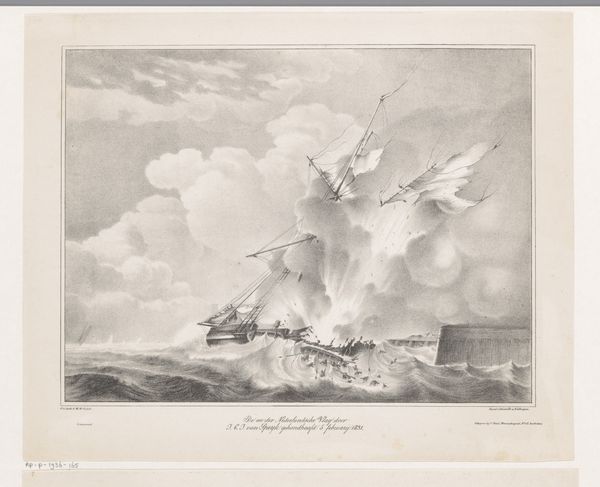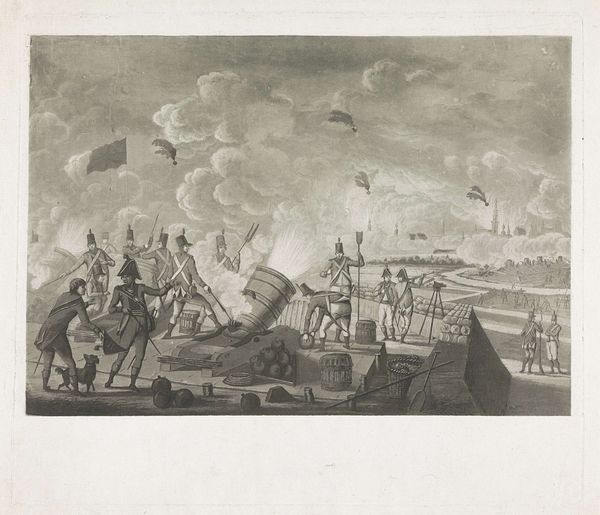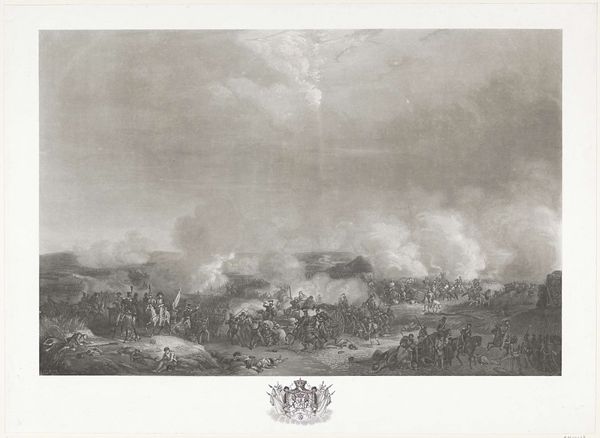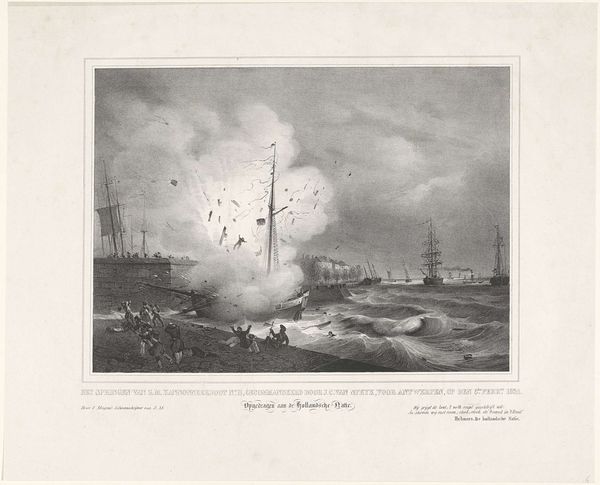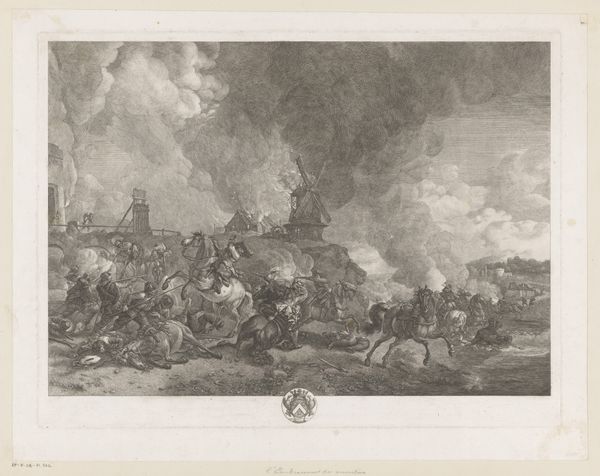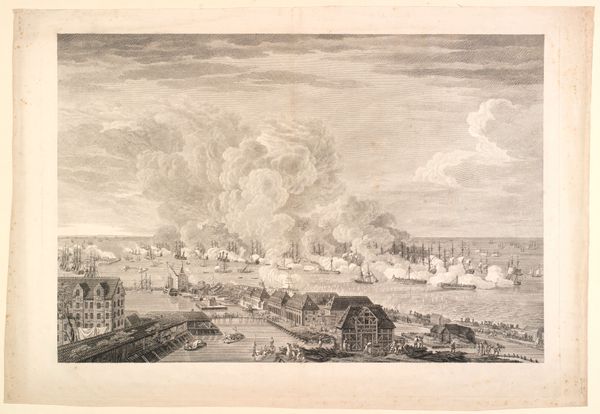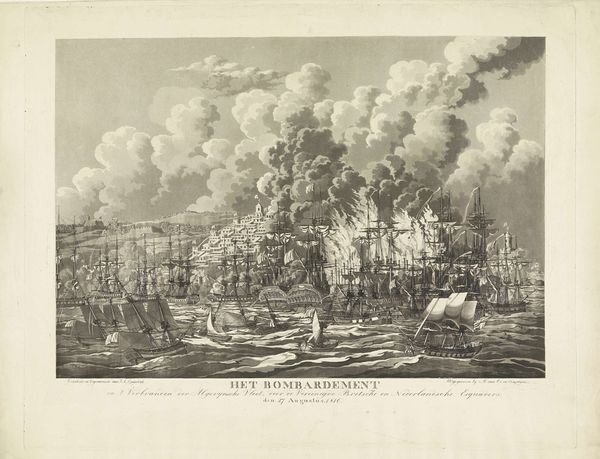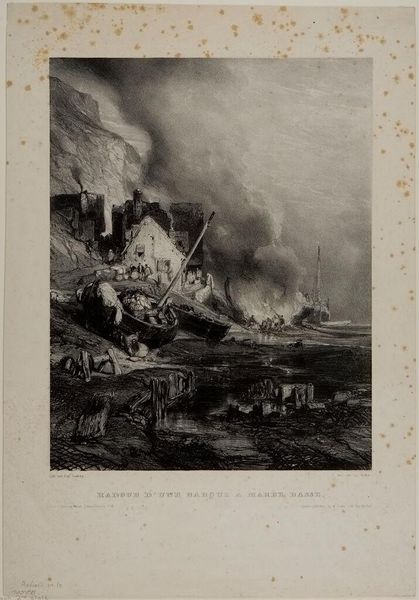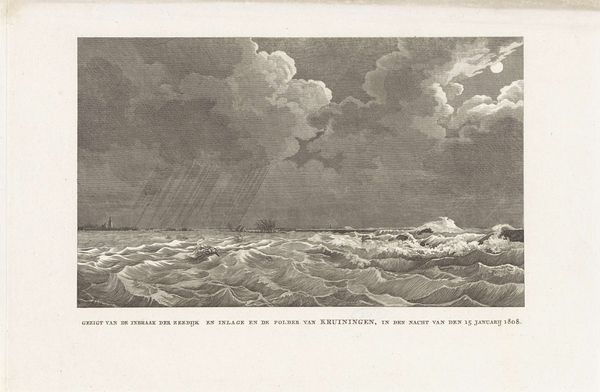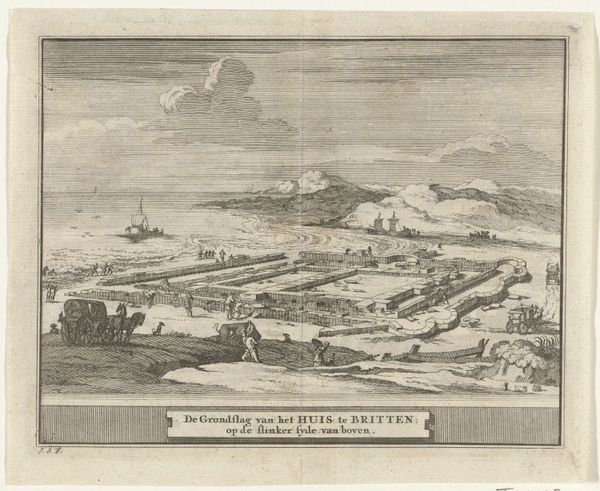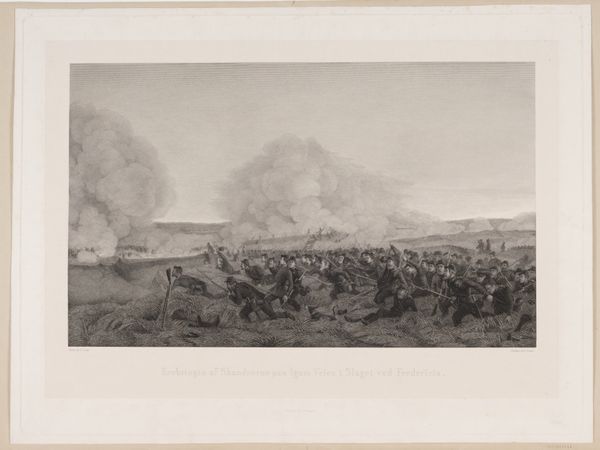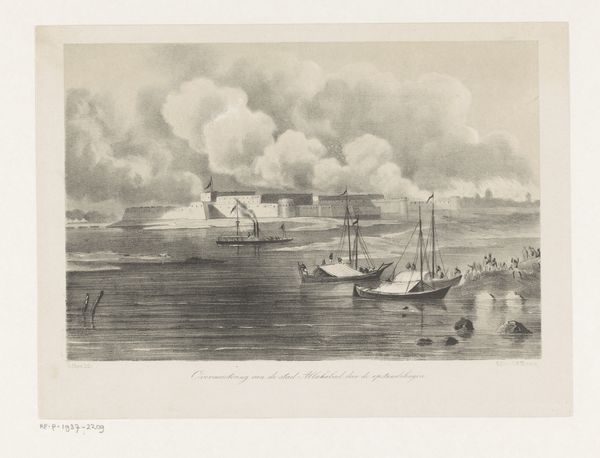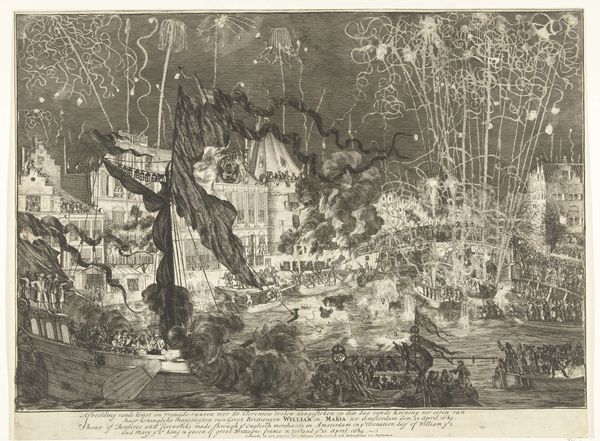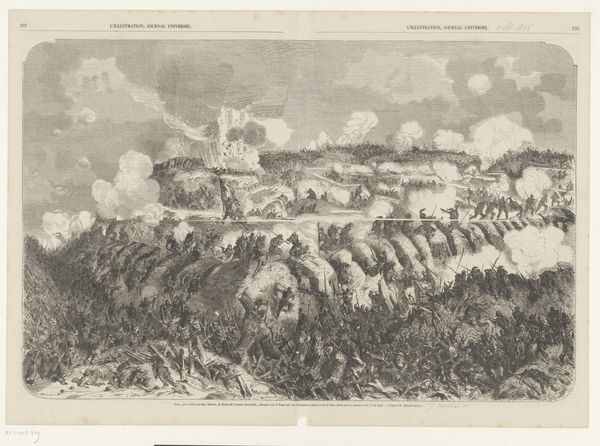
Dimensions: height 434 mm, width 545 mm
Copyright: Rijks Museum: Open Domain
Curator: What a dramatic scene. It's reminiscent of the romanticism era, a certain grandiose, even when portraying destruction. Editor: Indeed. This print, "Beschieting van de Citadel van Antwerpen in 1832", whose creation dates sometime in the 19th century, captures exactly that: the shelling of the Citadel of Antwerp. You can find it here at the Rijksmuseum. The anonymous printmaker really leaned into that visual language. Look at the intense smoke clouds dominating the horizon. Curator: And the sheer number of people involved! The anonymous creation implies so much labor was required to document this scene—from the initial drawing, through to carving the plate, to making each individual print. You really see how an event becomes transformed through artistic production, then reproduced and disseminated to a wide public. This wasn't just art; it was communication. Editor: Absolutely. These prints played a significant role in shaping public perception of the Siege of Antwerp during the Belgian Revolution. The depiction, however dramatic, would have influenced public understanding and emotional engagement with the conflict. The work doesn't only record, it participates in history. Curator: Considering its original context, one can't overlook its engagement with 19th-century military technology. Each cannon required significant production, labor and technical expertise, which is all invisibly embedded into the final image, don't you think? I can almost feel the immense weight of the materials involved. Editor: Yes, and that combination of documentation, the layering of artistic interpretation, plus the sociopolitical moment...it all speaks to the power that such imagery could wield. It made something immediate and permanent. A perfect fusion. Curator: Ultimately, it emphasizes how material processes shaped not just art but the narratives circulating within society. Editor: Agreed. It's a window into a complex historical moment viewed through layers of human involvement.
Comments
No comments
Be the first to comment and join the conversation on the ultimate creative platform.
